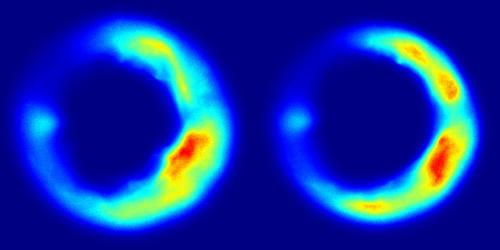Measuring the Intensity of the World’s Most Powerful Lasers
Scientists are building extremely powerful lasers. For around a trillionth of a second, one of these machines will emit thousands of times the power of the US electric grid. Such devices could allow researchers to explore unsolved problems related to fundamental physics principles and to develop innovative laser-based technologies. But these applications require precise knowledge of the intensity of any such laser, a parameter that is difficult to measure, as no known material can withstand the anticipated extreme conditions of the laser beams. Now Wendell Hill at the University of Maryland, College Park, and his colleagues demonstrate a technique that uses electrons to determine this intensity [1].
For their demonstration, the researchers fired a high-power laser pulse at a low-density gas, causing the gas to release electrons. The laser’s electromagnetic field then propelled these electrons forward and out of the laser beam. The team observed the angular distribution of the ejected electrons in real time using surfaces called image plates that act like photographic film.
Analyzing these image plates, Hill and his colleagues find that the angle of the emitted electrons relative to the beam’s direction is inversely proportional to a laser’s intensity, allowing this angle to serve as an intensity measure. The researchers demonstrate their method for laser intensities of 1019–1020 W/cm2 and suggest that it could be applied to intensities in the range of 1018–1021 W/cm2. They say that the approach could help scientists in field testing the next generation of ultrapowerful lasers and in studying, with high precision, the interaction between matter and strong electromagnetic fields.
–Ryan Wilkinson
Ryan Wilkinson is a Corresponding Editor for Physics Magazine based in Durham, UK.
References
- S. Ravichandran et al., “Imaging electron angular distributions to assess a full-power petawatt-class laser focus,” Phys. Rev. A 108, 053101 (2023).




